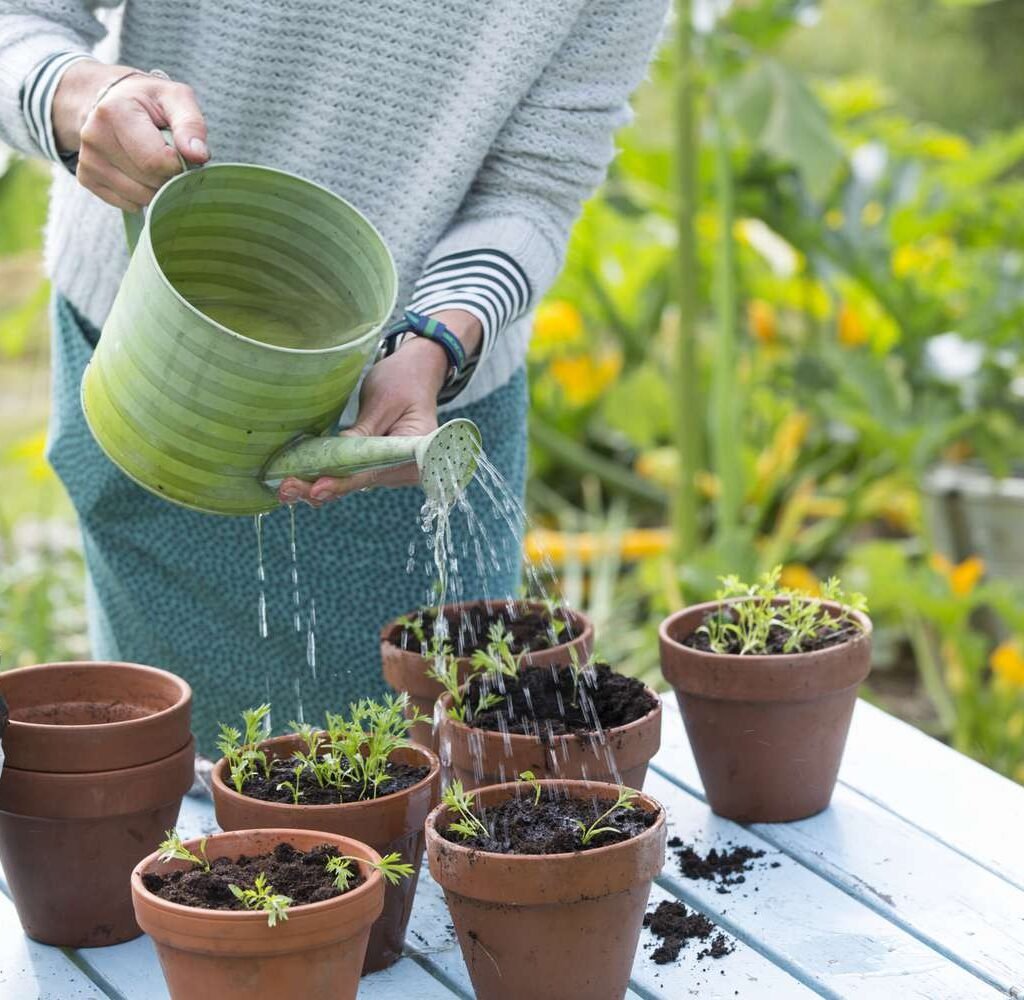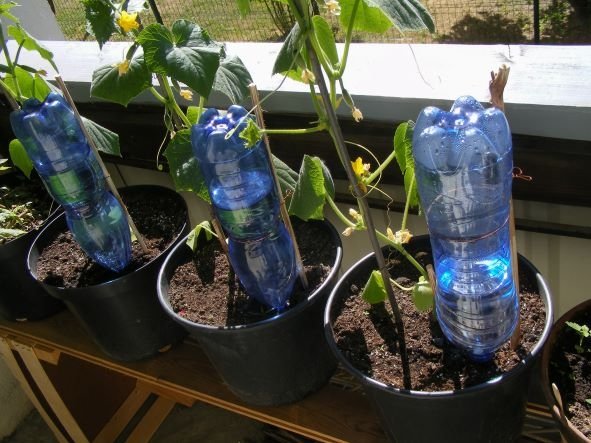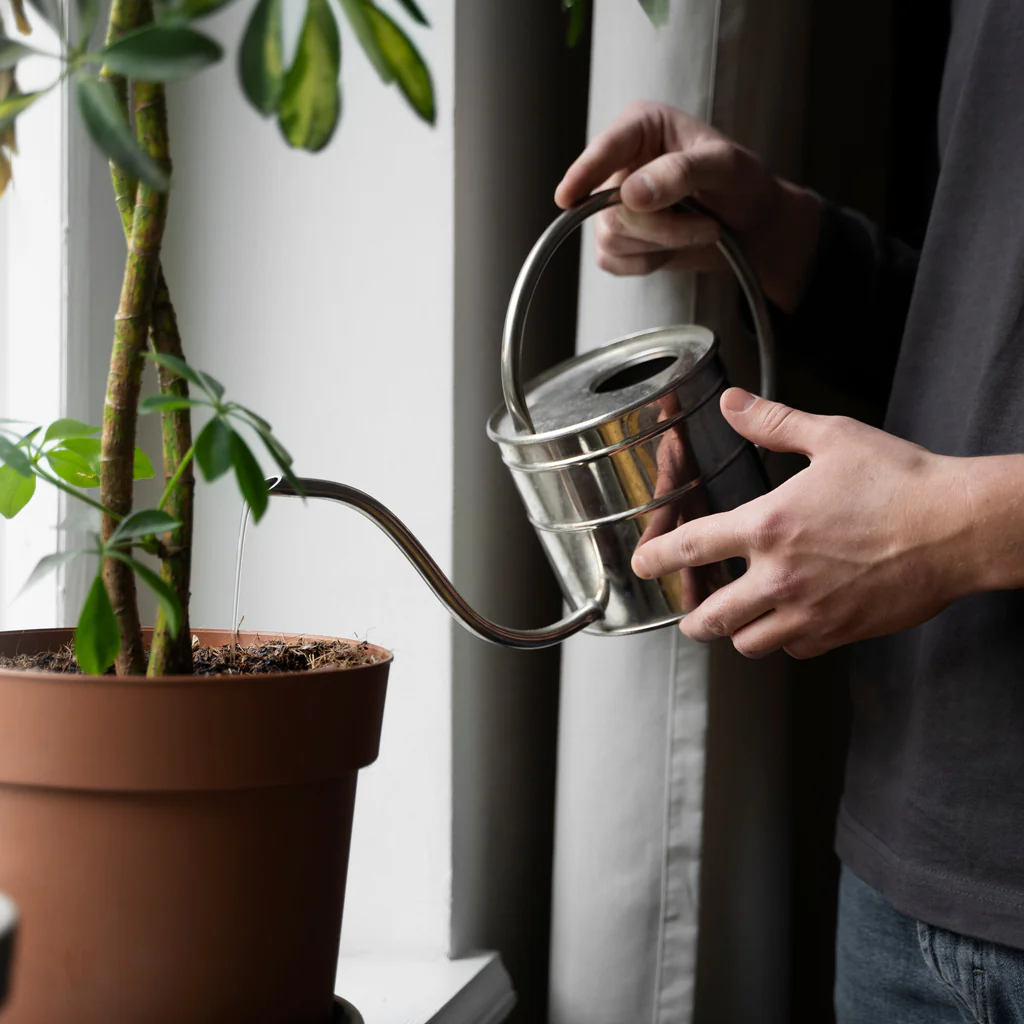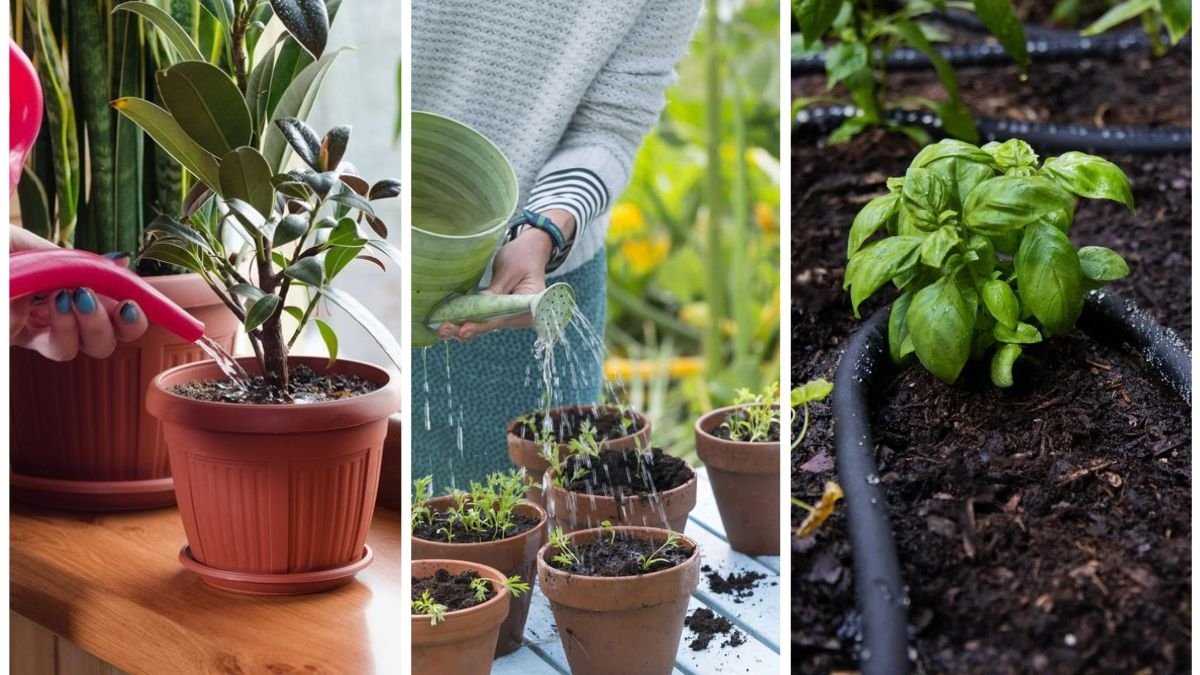Water is life, and for plants, it is the single most important factor that determines their growth, resilience, and productivity. Many gardeners assume watering is as simple as turning on a hose or filling a watering can, but in reality, proper watering is both an art and a science. Too little water leaves plants stressed and weak, while too much water suffocates roots and invites diseases. Learning how to water plants the right way ensures that your garden thrives beautifully in every season.
This guide will take you through the science of plant hydration, the best watering techniques, tools, and timing, along with common mistakes to avoid—helping you become a more mindful and effective gardener.
Why Proper Watering Matters

Watering correctly goes beyond just keeping plants alive. It influences nearly every aspect of plant health, including:
- Root Development – Deep watering encourages roots to grow downward, making plants more drought-resistant.
- Nutrient Absorption – Water dissolves essential minerals in the soil, transporting them to the plant roots.
- Photosynthesis – Without adequate water, plants cannot convert sunlight into energy effectively.
- Temperature Regulation – Water cools plants and soil, protecting them from heat stress.
- Disease Prevention – Correct watering practices reduce risks of fungal infections and root rot.
Simply put, water is the lifeblood of your garden, and learning how to manage it properly is key to long-term success.
Step 1: Understand Your Plants’ Needs

Not all plants require the same amount of water. A cactus thrives on minimal watering, while vegetables like lettuce need consistent moisture. Understanding plant types helps tailor your approach.
Plant Categories Based on Water Needs
- Drought-Tolerant Plants (succulents, lavender, rosemary): Prefer dry conditions; water sparingly.
- Moisture-Loving Plants (ferns, hostas, hydrangeas): Need consistent soil moisture.
- Vegetables and Fruits: Require regular deep watering, especially during flowering and fruiting stages.
- Young Plants and Seedlings: Need frequent light watering until roots are established.
Tip: Research the water requirements of each plant species in your garden to avoid over- or under-watering.
Step 2: Learn to Read the Soil

The soil is your best indicator of when to water. Watering by schedule alone can lead to problems; instead, focus on soil conditions.
- Dry Soil: Appears light in color, crumbly, and pulls away from edges of pots.
- Moist Soil: Feels cool and damp when you stick a finger 1–2 inches deep.
- Waterlogged Soil: Feels soggy, muddy, or gives off a foul smell—signs of poor drainage and overwatering.
A simple finger test (pressing your finger into the soil) or a moisture meter can help determine when watering is truly needed.
Step 3: Use the Right Watering Techniques
How you deliver water is just as important as how much you provide.
1. Water Deeply and Infrequently
- Encourage strong root growth by soaking the soil deeply rather than giving light, shallow sips.
- Shallow watering results in weak, surface-level roots that dry out quickly.
2. Target the Roots, Not the Leaves
- Apply water directly to the base of the plant where roots can absorb it.
- Wet foliage invites fungal diseases like powdery mildew.
3. Use Slow and Steady Watering
- Allow water to soak in gradually, preventing runoff.
- Drip irrigation systems or soaker hoses work best for this.
4. Adapt to Plant Type
- Containers and Pots: Dry out faster; require more frequent watering.
- Garden Beds: Hold moisture longer, especially with mulch.
- Trees and Shrubs: Benefit from deep watering less frequently but for longer durations.
Step 4: Time Your Watering Right

When you water matters as much as how you water.
- Early Morning (Best Time)
- Plants absorb water before the heat of the day.
- Reduces evaporation and prepares plants for hot conditions.
- Evening (Alternative)
- Works if mornings are not possible, but water must soak roots before nightfall to avoid fungal growth.
- Avoid Midday
- High sun causes water to evaporate quickly.
- Can scorch leaves if droplets act like magnifying glasses.
Golden Rule: Morning watering sets plants up for a healthier, more productive day.
Step 5: Use Mulch to Retain Moisture

Mulching is one of the best strategies to improve watering efficiency. A 2–3 inch layer of organic mulch (like bark, straw, or shredded leaves) around plants helps:
- Reduce evaporation.
- Keep soil temperature stable.
- Suppress weeds that compete for water.
- Prevent soil crusting, allowing better water penetration.
Combine mulching with deep watering for optimal results.
Step 6: Choose the Right Watering Tools
Different tools serve different purposes, and using the right one makes watering more efficient.
- Watering Can: Best for indoor plants or small garden beds.
- Garden Hose with Nozzle: Versatile for larger areas; use a gentle spray setting.
- Soaker Hose: Delivers water directly to the soil, ideal for rows of vegetables.
- Drip Irrigation System: Most efficient method; minimizes water waste and targets plant roots.
- Sprinklers: Cover large lawns, but less efficient for flower beds due to water loss from evaporation.
Investing in a good watering system saves time and conserves water.
Step 7: Adjust for Climate and Seasons
Your watering routine should change based on weather conditions.
- Hot, Dry Climates: Water more frequently, especially for shallow-rooted plants.
- Rainy Seasons: Cut back on watering to avoid over-saturation.
- Cold Weather: Plants need less water, but evergreens and perennials still benefit from occasional hydration.
Seasonal awareness prevents water waste and plant stress.
Common Watering Mistakes to Avoid
Even experienced gardeners make errors when watering. Avoid these pitfalls:
- Overwatering – Causes root rot and nutrient leaching.
- Underwatering – Leads to wilting, stunted growth, and poor yields.
- Frequent Light Watering – Promotes shallow root systems.
- Watering at the Wrong Time – Midday watering wastes water and stresses plants.
- Ignoring Soil Type – Sandy soils drain quickly, while clay retains water; each requires different watering frequency.
Sustainable Watering Practices
With increasing concern over water conservation, gardeners can adopt eco-friendly techniques:
- Collect rainwater in barrels to use for watering.
- Reuse household water (greywater) from rinsing vegetables if it’s chemical-free.
- Group plants with similar water needs together (a method known as hydrozoning).
- Install automatic drip irrigation systems with timers to minimize waste.
Sustainable watering ensures your garden thrives without straining natural resources.
Conclusion
Watering plants the right way is not about giving them more or less water—it’s about giving them what they need, when they need it, and in the most efficient way possible. By understanding your plants, monitoring soil moisture, watering deeply and at the right times, using mulch, and selecting the proper tools, you’ll create a thriving garden that’s healthier, more productive, and environmentally friendly.
Whether you’re tending a small indoor collection, a backyard flower bed, or a vegetable patch, mastering proper watering techniques is the foundation of successful gardening. With the right approach, every drop counts, and your plants will reward you with vibrant growth and abundant beauty.

Leave A Comment